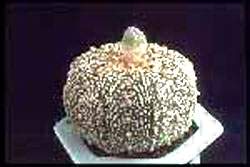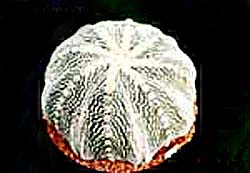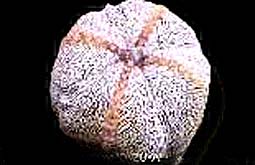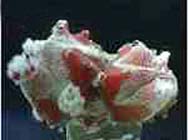THE 'KABUTO' ASTROPHYTUM SORTS
The article is reproduced from http://www.shaboten.com/astro.html with the kind permission of Mr. Kouhei Mizukami
Super Kabuto
When I first saw this plant I laughed because of it's strange white dots and it's incredible price. This plant was propagated from an imported mutation in 1980. The mutation can cross with ordinary Astrophytum asterias and the offspring look like that in the plant pictured at left. Therefore, they increased rapidly in Japan. Now, SUPER KABUTO forms come in many types, i.e., snow ball, zebra patterned white dot, large white dot and so on. Of course, I love them now (Photo 1).
 | 
|
Photo 1.| Photo 2.
| |
Miracle Kabuto
This special form of Astrophytum asterias is also a mutation, however, it is a distinct strain from Super Kabuto with it's own genetic lineage. Only a small number of these plants exist in Japan. The plant in the photo is one of the first descendants from the original plants (Photo 2).
Master Kabuto
There are many distinct forms of Kabuto in Japan which were produced by many famous Kabutophiles. In fact, so many new forms have been introduced by Kabutophiles that no one could enumerate all of them.Many of the photographed plants on this page come from northern Japan. Of course, many other outstanding Kabuto forms exist in other regions. Unfortunately, I have no idea where one might purchase or obtain these beautiful Kabutos. I suggest, however, that in the tradition of the Japanese Kabutophiles, you expend the time and energy to create your own splendid Kabutos (Photo 3).
Uncommon Kabuto
There are some remarkable Astrophytum asterias in Japan. All are mutant plants that were found and selected from a huge numbers of seedlings. Of course, excellent grafting skill also has contributed to growing these mutations (Photo 4).
 | 
|
Photo 3.| Photo 4.
| |
ONZUKA
Astrophytum myriostigma cv. "Onzuka"
This form was created somewhat by chance in Japan around 1974-1977. Commercial sales of this plant began in 1979. Many years ago (perhaps in 1970), Mr. Tsutomu Onzuka intended to cross three-ribbed A. myriostigma with A. myriostigma var. nudum. Subsequently, over several generations, he repeatedly backcrossed the offspring of a three-ribbed A. myriostigma with a four-ribbed A. myriostigma v. nudum. Finally, he obtained some strange A. myriostigma characterized by many white dots. It has been called 'ONZUKA.' Words cannot do justice to their distinctiveness (Photo 5).
 | 
|
Photo 5.| Photo 6.
| |
Koh-yo
Astrophytum myriostigma cv. "Koh-yo"
Koh-yo is a Japanese word and means yellow/red leaf in autumn season. There are two colors for this name, red and yellow. These species isn't a variegated one for vanishing its color in certain seasons. I am not sure those period when their body color turn to yellow or red. However They have a tendency of appearing such colors in dormancy period (Photo 6).





